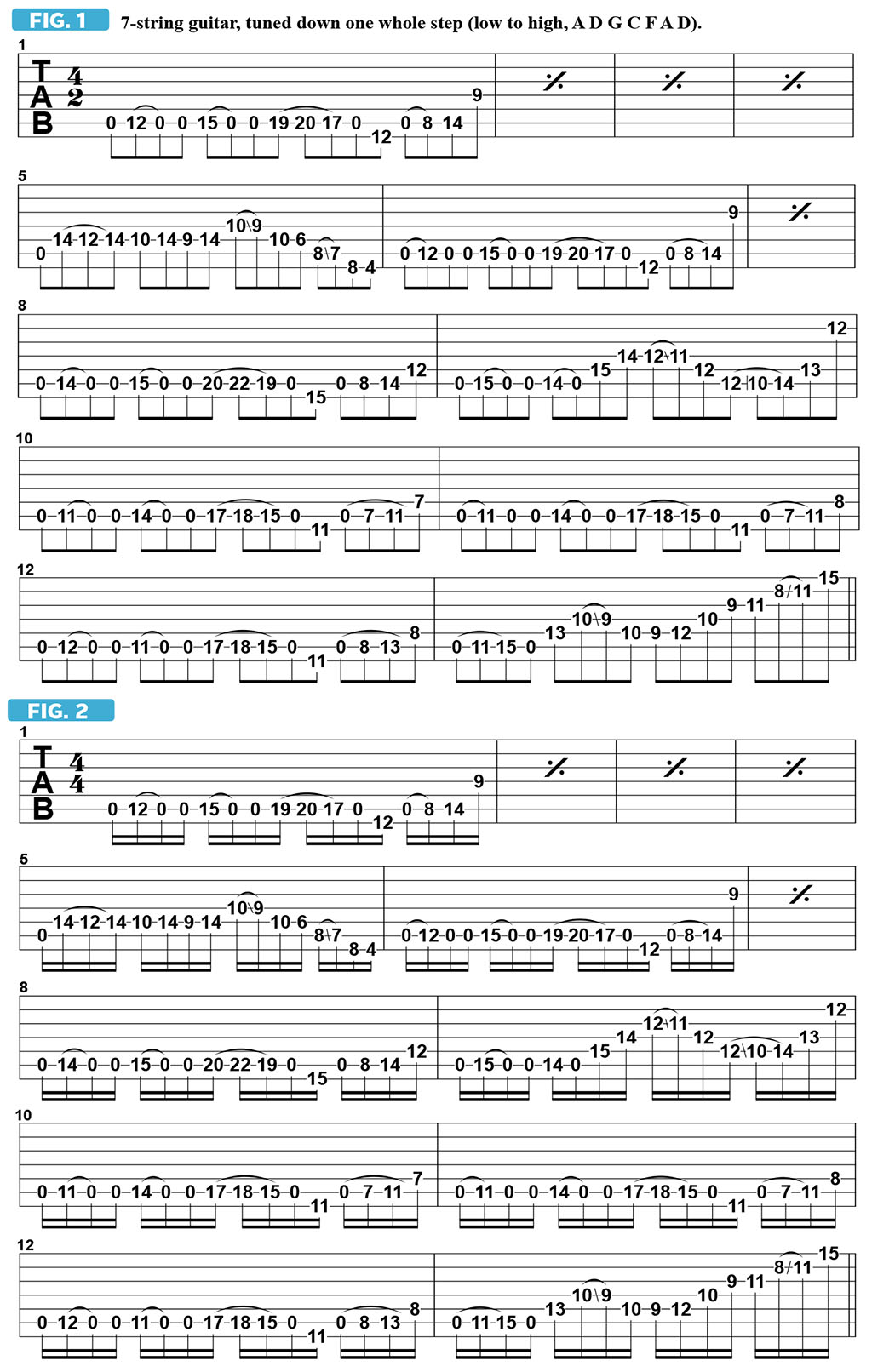Composing from a Synth Arpeggiator Pattern
Pick up a tricky lick from Jason Richardson.
Last month, I introduced the topic of composing musical ideas from programmed synth patterns. I was initially inspired to experiment with this approach by watching composer Hans Zimmer’s Master Class, and the intensely complex and very challenging examples presented in this month’s lesson grew from this specific approach.
Using the program I got from Zimmer’s class, I discovered its arpeggiator function and tinkered around with the LFO’s (low frequency oscillators) and the other oscillators to get it to sound a little different from the stock patches, and then changed the notes in the arpeggiator as well. I became curious and thought, “What would it sound like if I learned how to play this arpeggiated pattern on the guitar?” The arpeggiator was going up and down through crazy octave jumps, so I had to find a way to work around that and make the idea playable on guitar.

The melody is played on seven-string guitar, tuned down a whole step (low to high: A D G C F A D), so everything sounds a whole step lower than written. The entire melodic line is rather long, and FIGURE 1 illustrates the first 13 bars of it, played 173 beats per minute. In this example, I’m playing the melody at half speed, so the line is articulated in even eighth notes.
The line begins in Em, and the initial phrase is performed mostly with hammer-ons and pull-offs on the sixth string. In bar 5, I introduce the major seventh, D#, as a nod to E harmonic minor (E F# G A B C D#). In bars 10-13, I continually add slight changes to the melodic line while maintaining the use of pull-offs and hammer-ons on the sixth string, which serve as a springboard for each phrase, and the sequence ends with an ascending line that makes brief reference to F#m7b5, via the notes F# A C E.
As you’ll find, the line is quite challenging to play, even at half speed. Strive for even articulation with the pick hand, utilizing alternate (down-up) picking whenever there are no slurs. The judicious use of hammer-ons and pull-offs facilitates the use of alternate picking as the phrase progresses, so work slowly though each bar individually.
FIGURE 2 illustrates the melody as performed in the composition, in double time. This is very challenging to play at this tempo, so I recommend you start slowly and gradually increase the tempo while maintaining clean articulation of each melodic phrase.
All the latest guitar news, interviews, lessons, reviews, deals and more, direct to your inbox!
